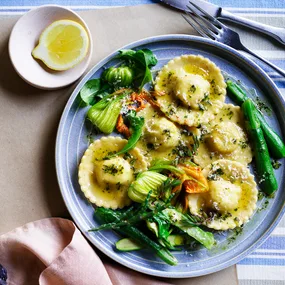The trick to mastering barbecue pork buns is time, patience and low-protein flour, writes Tony Tan.
Every time I look at the parade of dim sum delicacies on the trolleys at a yum cha restaurant, one of the first things I hunt for is char siu bao, also known as barbecue pork buns. This Cantonese steamed staple filled with juicy roast pork is a must-eat for most dim sum aficionados.
According to the many dim sum sifus, or masters, I’ve spoken with, a classic char siu bao must be soft and so well-risen that the bun splits like a smiling dumpling. This might sound simple enough, but the sifus contend that achieving this split is easier said than done. Lau Chor Keung, dim sum sifu of Hong Kong’s Grand Hyatt, says that with baking powder and immense patience, one can make acceptable buns that split, while Ho Kam Tai of Melbourne’s Red Emperor maintains you need a sourdough starter, and Sammy Chan of Melbourne’s Yum Cha Café uses both baker’s ammonia and baking powder. Baker’s ammonia is a leavening agent: it produces more gas than baking powder, its modern-day successor, and is commonly used to make Greek biscuits and northern European gingerbread. It’s incredible to watch how well the buns split and rise when you use baker’s ammonia, but this leavening agent is quite foul to the nose. One whiff is enough to make you swoon (not in a good way), and I suspect this is the very reason so few dim sum chefs use this stuff nowadays.
When making the bun dough, some chefs also use a tiny dose of lye water – a strongly alkaline solution – to break down the starch in the flour. Lye water is also used to cure olives and to make noodles and pretzels, and while it’s safe to consume, its use is not advisable in a domestic situation because it’s hazardous and can cause chemical burns.
For this masterclass, I experimented with several recipes and various combinations of lye water and baker’s ammonia to make my buns, and the results were quite spectacular – the buns rose just like the ones you see in yum cha restaurants. But the thought of using these ingredients in a domestic kitchen is slightly scary and not recommended, so the recipe I’ve developed and included here omits them altogether. In any case, you need a warm environment for the bao dough to rise – ideally, your kitchen should be between 25 and 27C.
The other key ingredient to consider is flour. Cantonese steamed buns are soft and delicate because they’re made with Hong Kong flour, a low-protein flour. You can buy it from Asian grocers; ask for Hong Kong flour or low-protein flour, or simply look for a picture of a bun on the packet. Lighthouse brand “biscuit and pastry flour” is also suitable; it’s readily available from major supermarkets. If you use plain flour your steamed buns will be slightly heavy, rather more like those found in northern China (which, in my opinion, are also delicious).
Dim sum sifus also insist that char siu bao must be snow-white in colour. To achieve this, you need to use Hong Kong flour, as it’s highly bleached. I still remember a Malaysian dim sum “uncle” recommending adding some vinegar to attain a white bao dough, and I’ve seen other recipes call for milk, but I suspect these additions make little difference to the colour.
Finally, there are a couple of factors to consider when you’re making the filling. For the char siu, use pork neck or shoulder for their mix of fat and lean meat. In an ideal world, the pork would be cooked over a charcoal burner or barbecue (for further information, see our char siu recipe), but to keep things simple we’ve used an oven.
This recipe doesn’t use a starter culture or baker’s ammonia, and the buns will not split in the classic way, but they’ll be soft and delicate.
Ingredients
Method
Main
Note The char siu recipe, courtesy of the Hong Kong Grand Hyatt’s dim sum sifu, Lau Chor Keung, is best prepared a day ahead. Red fermented beancurd is available from Asian grocers.
Notes










